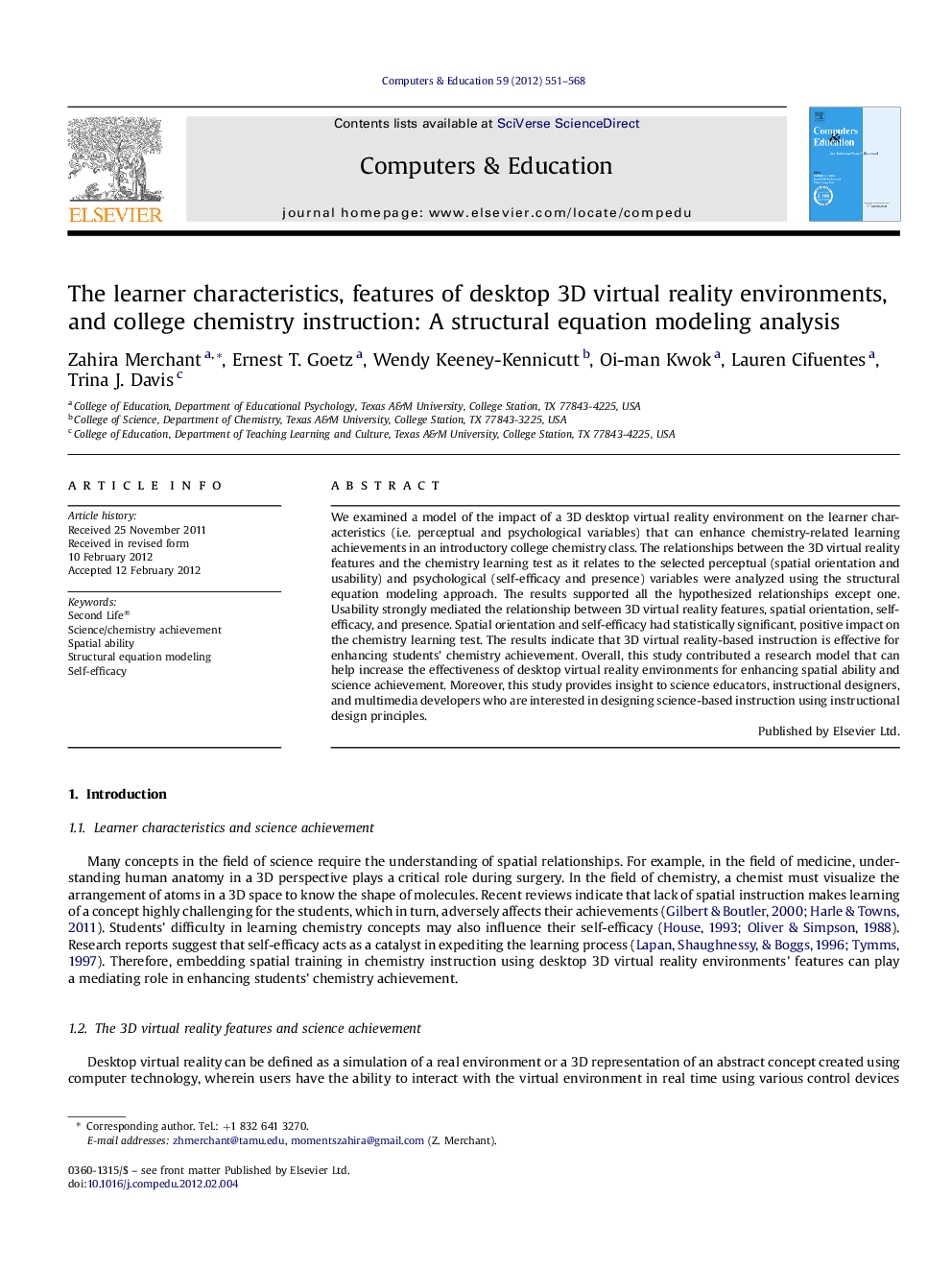| کد مقاله | کد نشریه | سال انتشار | مقاله انگلیسی | نسخه تمام متن |
|---|---|---|---|---|
| 348713 | 618200 | 2012 | 18 صفحه PDF | دانلود رایگان |

We examined a model of the impact of a 3D desktop virtual reality environment on the learner characteristics (i.e. perceptual and psychological variables) that can enhance chemistry-related learning achievements in an introductory college chemistry class. The relationships between the 3D virtual reality features and the chemistry learning test as it relates to the selected perceptual (spatial orientation and usability) and psychological (self-efficacy and presence) variables were analyzed using the structural equation modeling approach. The results supported all the hypothesized relationships except one. Usability strongly mediated the relationship between 3D virtual reality features, spatial orientation, self-efficacy, and presence. Spatial orientation and self-efficacy had statistically significant, positive impact on the chemistry learning test. The results indicate that 3D virtual reality-based instruction is effective for enhancing students’ chemistry achievement. Overall, this study contributed a research model that can help increase the effectiveness of desktop virtual reality environments for enhancing spatial ability and science achievement. Moreover, this study provides insight to science educators, instructional designers, and multimedia developers who are interested in designing science-based instruction using instructional design principles.
► Science achievements can be improved at the college level using 3D virtual reality.
► We used statistical technique of structural equation modeling to test the model.
► 3D virtual environments indirectly support the development of spatial ability.
► 3D virtual environments indirectly support the enhancement of self-efficacy levels.
► 3D virtual environments indirectly improve the learning of chemistry concept.
Journal: Computers & Education - Volume 59, Issue 2, September 2012, Pages 551–568